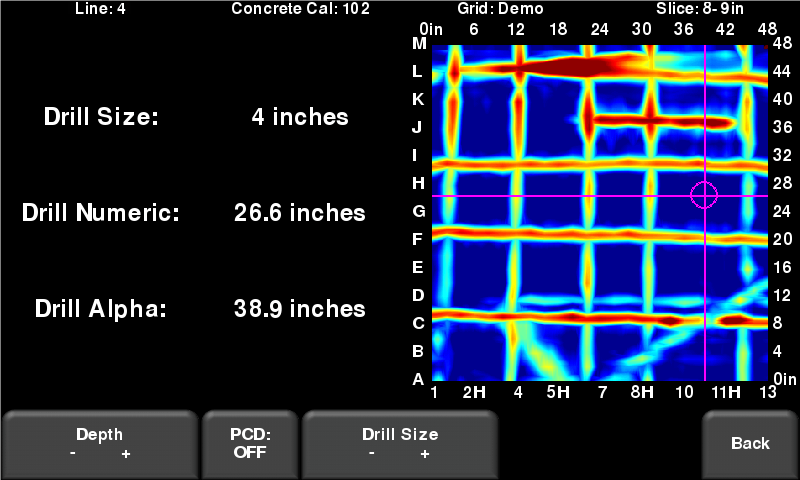Precision in Construction with Concrete Scanning and Imaging
Wiki Article
Beyond the Surface: Unraveling the Tricks of GPR Scanning for Concrete Applications
Are you all set to dive deeper into the world of GPR scanning for concrete applications? Discover the basics of GPR scanning, learn exactly how it works, and check out ideal techniques for performing scans on concrete surface areas.The Basics of GPR Scanning for Concrete Applications
GPR scanning is commonly made use of to analyze the condition of concrete frameworks. When you use GPR scanning, you can conveniently unwind the keys that lie beneath the surface area of the concrete. It offers you with useful information about the interior framework of the concrete and aids you recognize any possible concerns or defects.With GPR scanning, you can swiftly and non-destructively figure out the density of the concrete slab and situate any voids or delaminations within it - Concrete Scanning and Imaging. This info is critical for assessing the architectural honesty of the concrete and intending any type of essential repair services or upkeep
Additionally, GPR scanning permits you to identify the existence of reinforcing steel bars, likewise called rebar, within the concrete. This is necessary for assessing the strength and sturdiness of the framework, as well as for making sure appropriate building and construction practices were followed.
On top of that, GPR scanning can discover the existence of wetness or water seepage within the concrete. This is particularly crucial as moisture can cause rust of the strengthening steel, which can compromise the architectural stability of the concrete with time.

Comprehending the Innovation Behind GPR Scanning
To recognize how it works, you need to comprehend the modern technology behind GPR scanning. Ground Passing Through Radar (GPR) is a non-destructive testing approach that makes use of electro-magnetic waves to spot subsurface objects and attributes. It includes three major parts: a control device, an antenna, and a display system. The control unit sends high-frequency radio waves right into the ground with the antenna. These waves then get better when they experience changes in the subsurface products. The antenna receives the mirrored waves and sends out the information back to the control system. The control system processes this information and shows it on the screen of the display screen unit.GPR scanning operates the principle of time travel. The control unit determines the time it takes for the waves to take a trip to the subsurface and recuperate. By assessing the moment and strength of the mirrored waves, GPR can figure out the depth and area of items within the concrete. Various materials have distinct electro-magnetic buildings, which impact the method the waves are shown. This allows GPR to identify in between concrete, rebar, gaps, and other subsurface features.
Finest Practices for Performing GPR Scanning on Concrete

Interpreting GPR Scanning Outcomes for Concrete Applications
As soon as you have actually conducted the GPR scans on the concrete, it's time to evaluate and interpret the outcomes to get beneficial insights. The interpretation of GPR scanning results is a vital action in understanding the condition of the concrete and determining any type of potential problems. When examining the GPR information, you need to start by looking for anomalies or variants in the signals. These anomalies might suggest the presence of gaps, cracks, or various other issues within the concrete. Focus on any kind of changes in signal shape, strength, or depth, as these can offer important information about the concrete's condition.Along with recognizing problems, the interpretation of GPR results can additionally help figure out get more the density and structure of different concrete layers. By evaluating the representations and diffractions in the GPR information, you can approximate the deepness and thickness of various layers, such as the concrete cover, support, or any other ingrained elements. This information is essential for examining the try this website structural integrity of the concrete and intending any essential repair work or maintenance work.

Advanced Techniques for GPR Scanning in Concrete Evaluation
By using sophisticated techniques, you can improve the accuracy and resolution of GPR scans for examining concrete structures (Concrete Scanning and Imaging). One such method is called multi-frequency GPR scanning. On the whole, by utilizing these advanced techniques, you can substantially enhance the effectiveness of GPR scanning in examining concrete frameworks.Verdict
So there you have it - the tricks of GPR scanning for concrete applications have been deciphered. Currently that you comprehend the basics of this innovation and exactly how it works, you can with confidence perform GPR scanning on concrete frameworks.Discover the fundamentals of GPR scanning, discover just how it works, and check out best techniques for conducting scans on concrete surface areas. When you use GPR scanning, you can conveniently decipher the tricks that exist beneath the surface area of the concrete. The analysis of GPR scanning results is a critical step in understanding the problem of the concrete and identifying any kind of possible issues. In general, by utilizing try this site these advanced techniques, you can significantly enhance the effectiveness of GPR scanning in evaluating concrete structures.
Currently that you understand the fundamentals of this technology and exactly how it functions, you can with confidence conduct GPR scanning on concrete frameworks.
Report this wiki page